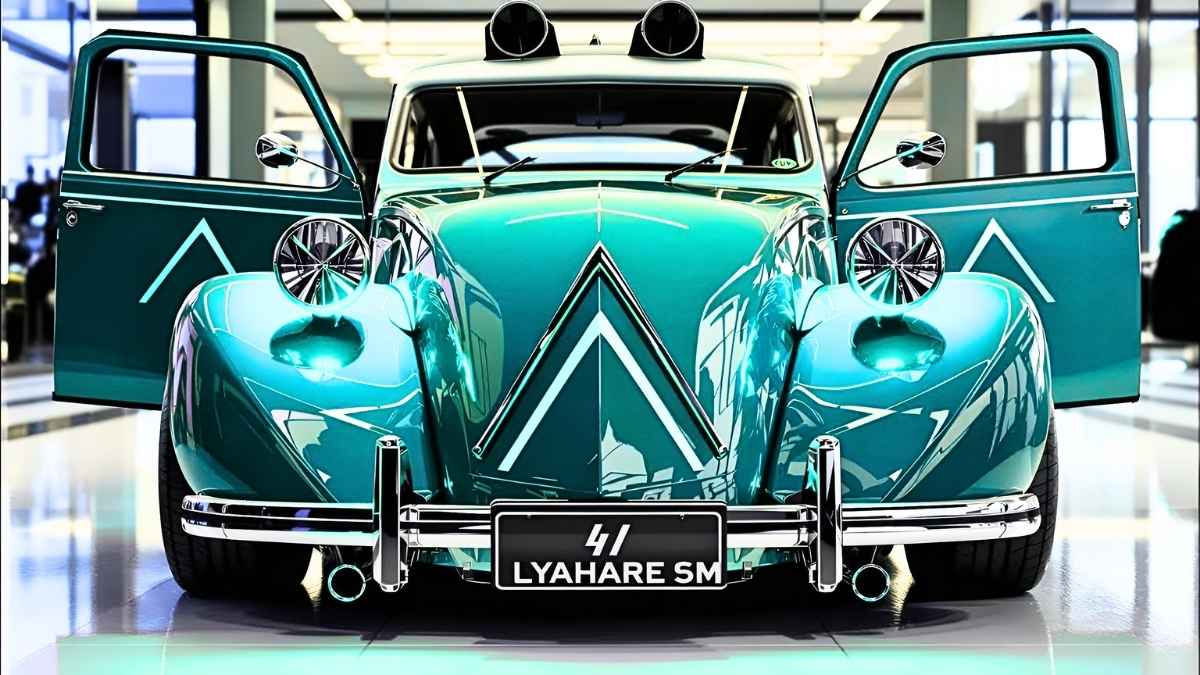The 1961 Citroën 2CV Sahara is one of the most remarkable and unconventional vehicles ever produced. Designed during a period when off-road vehicles were still in their infancy, the Sahara showcased Citroën’s commitment to innovation and engineering creativity. What sets this car apart from its contemporaries is its unique dual-engine configuration and 4×4 drivetrain, making it capable of traversing some of the most challenging terrains imaginable. With fewer than 700 units ever produced, the 2CV Sahara has earned legendary status among collectors and off-road enthusiasts alike.
Design and Engineering Innovation
At first glance, the 2CV Sahara appears to be a standard 2CV, but its capabilities go far beyond the typical city car. Citroën engineers equipped the vehicle with two engines, one powering the front wheels and another powering the rear wheels, enabling true four-wheel drive. This innovative system allowed the car to tackle sand, rocks, and steep inclines with remarkable ease for its size and era.
The Sahara’s chassis was reinforced to accommodate the added weight and mechanical complexity of the dual engines. The car also featured a taller suspension and improved ground clearance, allowing it to traverse rough terrain that would have stalled most vehicles of the time. Its body design remained minimalist, maintaining the iconic 2CV silhouette while providing practical functionality for off-road use.
Dual Engines and Drivetrain Capabilities
The heart of the 2CV Sahara lies in its twin-engine setup. Both engines were two-cylinder units, mounted at the front and rear of the vehicle. Each engine had its own fuel system and could operate independently, but when combined, they provided enhanced traction and power. Drivers could engage either engine individually for road driving or both simultaneously for maximum off-road performance.
This dual-engine configuration allowed the Sahara to reach places that traditional two-wheel-drive vehicles could not. It was particularly well-suited for desert expeditions, mountainous regions, and other extreme environments. The innovative drivetrain demonstrated Citroën’s forward-thinking approach to vehicle design, blending simplicity with practical off-road engineering.
Interior and Practical Features
The interior of the 2CV Sahara was simple but functional. The vehicle was designed to be lightweight and durable, with materials that could withstand exposure to the elements during off-road use. The cabin was basic yet comfortable enough for long journeys, featuring seating for four passengers and storage compartments that accommodated supplies and tools.
The Sahara’s controls were straightforward, reflecting Citroën’s philosophy of accessibility and ease of use. Despite its compact size, the car provided sufficient visibility and maneuverability for off-road navigation. Every design choice, from the seating layout to the dashboard instruments, prioritized practicality and reliability, making it a true adventure vehicle.
Off-Road Performance and Legacy
The 1961 Citroën 2CV Sahara was capable of handling a variety of terrains that challenged conventional vehicles of the era. Its twin engines provided unmatched traction, while the lightweight design allowed it to float over sand dunes and traverse rocky paths with relative ease. It was used in expeditions, military applications, and exploration projects, proving its versatility and toughness.
Over the years, the Sahara has gained recognition not only as a rare collectible but also as a symbol of Citroën’s daring approach to engineering. It challenged traditional automotive norms and demonstrated that innovation could come in small, unassuming packages. Its off-road prowess and dual-engine layout remain points of fascination for automotive historians and enthusiasts alike.
Collectibility and Market Value
Due to its rarity and historical significance, the 2CV Sahara commands significant attention in the collector car market. Well-preserved examples can fetch impressive prices at auctions, often surpassing the value of standard 2CV models. Collectors are drawn not only to its scarcity but also to its innovative engineering, distinctive appearance, and the story behind its creation.
Restoration projects for the Sahara require specialized knowledge due to the dual-engine setup and unique drivetrain components. Enthusiasts who undertake such projects often view them as opportunities to preserve a remarkable piece of automotive history. Its value extends beyond monetary worth, representing a tangible connection to a time when ingenuity and experimentation drove automotive design.
Key Highlights
• Ultra-rare 1961 model with fewer than 700 units produced
• Dual-engine setup powering both front and rear wheels for true 4×4 capability
• Reinforced chassis and improved ground clearance for extreme off-road conditions
• Minimalist interior designed for durability and practicality
• Exceptional off-road performance, capable of traversing sand, rocks, and mountains
• Iconic status among collectors and automotive historians for innovation and rarity
• Demonstrates Citroën’s forward-thinking approach to compact, versatile vehicles
Final Words
The 1961 Citroën 2CV Sahara remains a testament to automotive ingenuity and bold experimentation. Its dual-engine design, 4×4 capabilities, and rugged simplicity set it apart as one of the most innovative vehicles of its time. Beyond its mechanical achievements, the Sahara represents a philosophy of creativity and practicality that continues to inspire enthusiasts and engineers today. For collectors, historians, and off-road aficionados, the 2CV Sahara is more than a car; it is a symbol of daring design, adventure, and the enduring legacy of one of France’s most iconic automotive brands.




